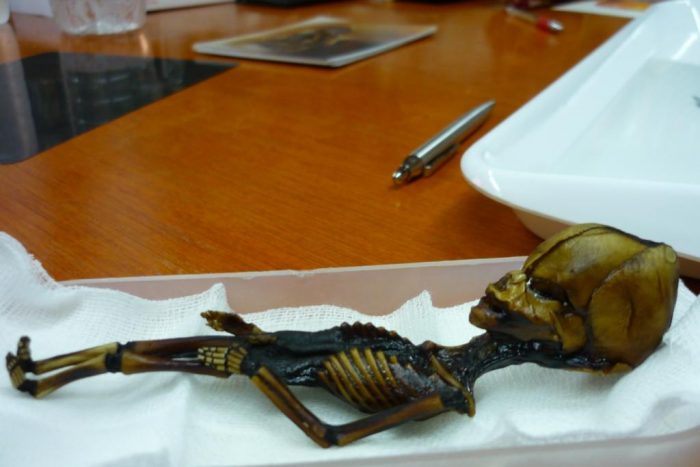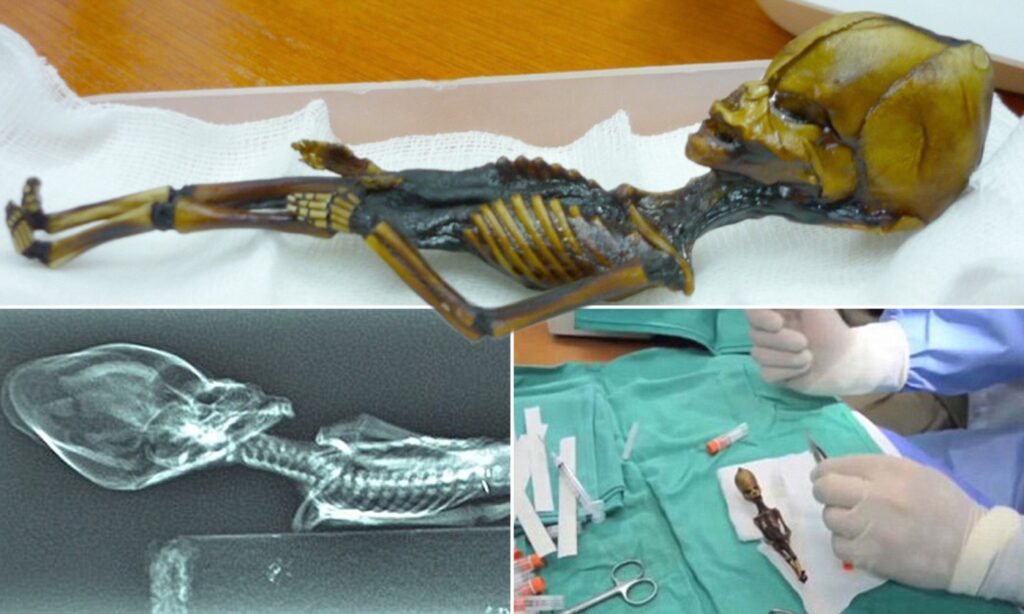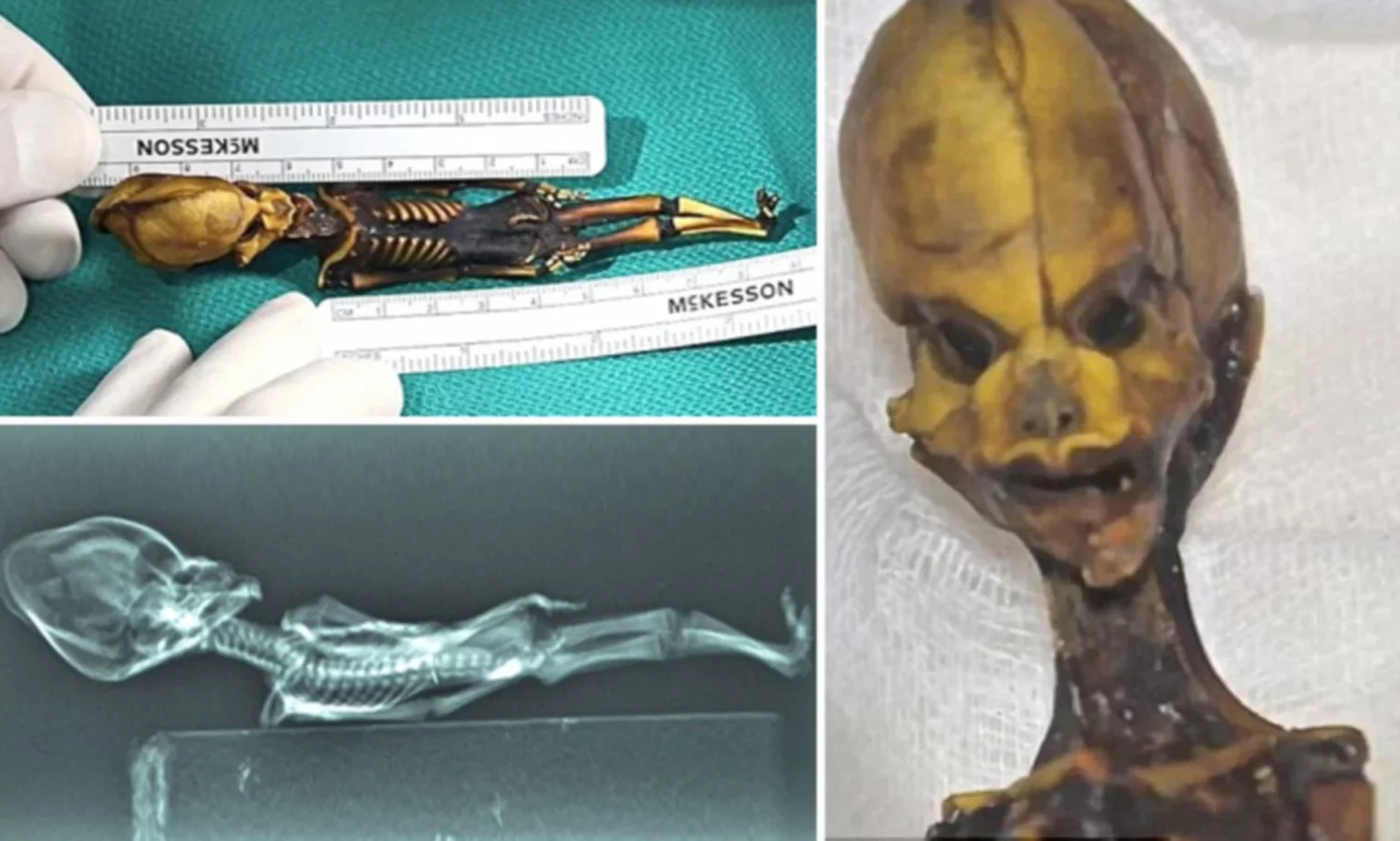The enigmatic “Atacama skeleton” discovered in Chile’s Atacama Desert has long been a subject of fascination, sparking debates and sensational theories about its origins. Recent revelations by the owner of the peculiar six-inch mummy have added a new layer to the mystery, suggesting a possible terrestrial humanoid connection in the high caverns of the South American Andes.
The Atacama Skeleton’s Checkered Past:
Dubbed “Ata,” the skeleton gained notoriety after its discovery in an abandoned church in the ghost town of La Noria, 3,225 feet above sea level. Since then, various theories, including claims of extraterrestrial origins, have surrounded this tiny skeletal specimen.

Challenging the Alien Narrative:
The Spanish researcher and businessman who owns the Atacama skeleton recently unveiled a theory on Spain’s Mitele TV network, proposing a connection to a small class of terrestrial humanoids. This claim challenges the widely circulated belief in the “alien” nature of the skeleton, stirring fresh discussions within the scientific community.

While the owner’s theory gained attention, experts and critics swiftly dismissed it as “absurd” and lacking scientific evidence. DailyMail reported that specialists in child anatomy and anthropology, including Professor Siân Halcrow from the University of Otago, emphasized that the skeleton aligns with a typical human fetal structure, debunking notions of extraterrestrial origin.
Professor Halcrow, who previously collaborated on a comprehensive investigation into Ata, reiterated findings that suggested the skeleton likely belonged to a fetus or preterm newborn, with an estimated gestation period of about 15 weeks. The evaluation took into account Ata’s diminutive size, measuring six inches from the top of the skull to the heel.
Ownership and UFO Enthusiast Connection:
The Atacama skeleton’s journey involves businessman Ramón Navia-Osorio Villar from Barcelona, who acquired it from treasure hunter Oscar Muñoz in 2003. Navia-Osorio, known for his interest in unidentified flying objects (UFOs), is the head of the Institute for Exobiological Investigation and Study (IIEE), which previously published a study on Ata in 2013.
Controversial Stanford Research:
The mystery surrounding Ata deepened with Stanford University’s 2018 research, published in Genome Research. The study, titled “The Anthropomorphic Being From Atacama,” refuted claims of alien life but faced criticism for ethical concerns related to the removal of Ata’s remains.
Despite the controversies, Professor Halcrow highlighted that the genetic mutations identified in Ata did not necessarily impact its development at the fetal stage. While public fascination persists, medical professionals specializing in human anatomy recognize Ata’s features as within the spectrum of normalcy. The Atacama skeleton continues to captivate imaginations, leaving its true origin an intriguing and unsolved puzzle.




